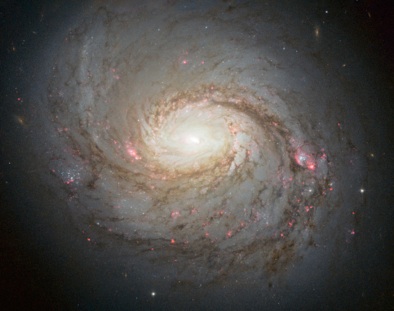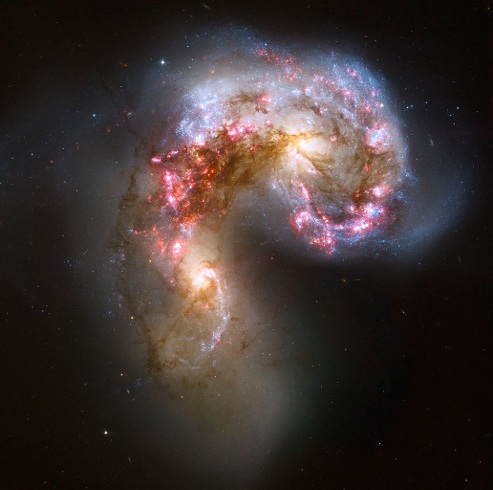The first stars formed soon after the Big Bang and they have been shaping and guiding the evolution of the universe ever since. Stars invented chemistry by enriching the dull and lifeless mixture of hydrogen and helium left by the Big Bang with heavier elements like carbon, magnesium and iron without which there would be no planets and nothing to live on them.
Light from stars illuminates galaxies and feedback from stars dominates galactic evolution.

The image at the right shows spiral galaxy M77 imaged by the Hubble Space Telescope. Dark lanes of dust and gas are silhouetted against the galactic disk. Reddish patches are vast bubbles of ionised hydrogen generated by very young star clusters recently born within the spiral arms. Seen from a distance, our Milky Way would look much like this.

The Antennae galaxies from the Hubble Space Telescope. Here, two spiral galaxies have collided with each other. The crash has compressed the gas and dust in the galaxies’ discs, resulting in a tremendous burst of star formation, particularly in the region squashed between the two vast stellar systems. The places where star formation is most vigorous are visible in the pinkish red light produced by hydrogen ionised by the newly-formed hot massive stars.

Star Formation
Image from Wikipedia: M77
Image from Wikipedia: The Antennae
